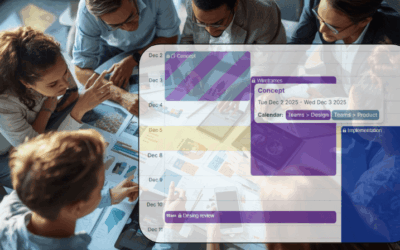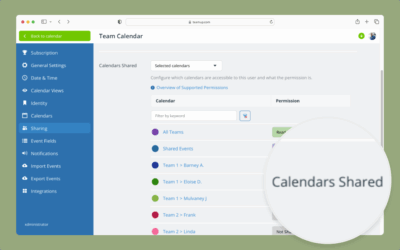“If someone were to look at my calendar, they would go, ‘Jeff, you seem to be pretty busy.’ One thing I did a couple of years ago was to decide to take a 30,000 foot view and look at what I’m doing through the lens of what gives me energy and what zaps my energy and color-code my calendar accordingly. I found that those things that give me energy–which are colored green–there was a lot of that. For things that zap my energy, that I colored red, there was almost nothing. So that helped me to realize that I’m busy, I’m loving what I’m doing, and I’m not doing anything that would take me out of balance.”
— Jeff Brown, Read to Lead podcast eps. 391
Some days, a packed schedule feels energizing; other days, even a few tasks leave you drained. The difference often comes down to how you manage your energy, not just your time. If you only focus on the number of tasks or events in your schedule, you’re not seeing the whole picture. To create a schedule that boosts productivity, focus, and well-being, pay attention to your energy. Here’s how to track and balance your energy with a Teamup calendar.
Key insights
What is energy tracking? Simply noting how each activity affects your energy, positive or negative. Your calendar becomes a tool for balance, not just timekeeping.
- Energy tracking reveals patterns deeper than task count.
- A visual calendar turns energy trends into clear insights.
- Insights help you balance energy proactively.
- Small shifts in your schedule can make a big difference.
Benefits of energy tracking: Spot patterns in what fuels or drains you, so you can plan your days for better balance. Learn which activities come with high energy cost to prevent burnout. Protect your time for energizing work, focus, and flow.
Busy does not equal burned out
Sure, having a packed calendar can feel overwhelming and stressful. But the stress isn’t just about the number of items; it’s about the type of tasks and activities filling up your day.
Energy-reducing activities
Some activities are draining, regardless of the mental or physical effort needed. These energy-zapping items often include:
- Repetitive tasks: Your brain isn’t engaged.
- Unclear goals: You don’t know if you’re making progress.
- High urgency: Your brain gets overwhelmed by the sense of danger.
- Frustrating activities: They don’t line up with your skills or strengths.
Energy-building activities
In contrast, energy-building activities make you feel engaged and motivated. Tasks in this category usually hit right at the sweet spot of capability and challenge: you have the skills, but it stretches you a little. That stretch engages your curiosity and helps you focus.
Situational energy
Sometimes, it’s about the larger environment or situation rather than a specific task. Frequent interruptions, noises, distractions, discomfort or hunger, or conflicting priorities can turn an energizing task into a draining experience. The reverse is true, too. Perhaps you’re working on a task that typically drains you, but you’re doing so with colleagues you enjoy. Their skills and energy change the situation, so you find yourself enjoying a task you normally dread.
A calendar for energy tracking
It only takes a few seconds to add an activity and select the energy category from the custom field.
To build a schedule that leaves you energized instead of drained, start by noticing how each task or activity affects your energy level. To do that, set up a simple Teamup calendar and log the energy change for each activity. After using it for a few days or weeks, you’ll have a great visual representation of where your energy is going. Then you can use the data to find patterns, gather insights, and make smart adjustments to your schedule for more energy.
Quick start guide
Want to get right into it? Follow these steps to start tracking and balancing energy:
- Create your Energy Tracker calendar from this template.
- Take a few seconds after each activity to log the energy change.
- After a few days of logging, look for patterns and insights.
- Use what you’ve learned to make smart shifts in your schedule.
Categorize by energy
At first, the only thing to do is start noticing and tracking how each task, activity, or time block affects your energy. Add it to your calendar with the appropriate option. The key here is to be honest. Maybe you planned a weekend activity you thought you’d love, but it left you feeling down and drained. Or maybe a task that’s usually a chore actually made you feel motivated and energized. These are clues you can use, so capture them accurately.
Notice the patterns
After tracking energy for a week or two, look back over your calendar. The visual cue for each energy category will make it easy to see how much time goes to energy-zapping tasks and how much goes to energy-building activities.
Look for three things:
- Tasks/activities that always or almost always drain your energy
- Tasks/activities that always or almost always build your energy
- Times when a task switched from energy-zapping to energy-building, or vice versa
- Days that are stacked heavily toward energy-zapping or energy-building
Adjust your schedule
Now you’re ready to make some adjustments. The goal is to build a schedule that promotes more energy-building and reduces energy-zapping. It’s not feasible to eliminate all energy-zapping tasks, but perhaps you can delegate some, automate some, or batch them together. Look into environmental changes as well. If working with others helps energize you, plan co-working sessions for the tougher tasks. If interruptions keep you from getting into flow on a task you love, maybe you can shift that task to a time that’s less busy.
Keep improving
Over time, you can keep tracking energy to gain more insights. Every pattern has something to reveal.
For example, you might see that you tend to get in an argument with your partner on Thursday nights…. right after a long afternoon of energy-zapping staff meetings! Once you see the pattern, you can make positive changes. Maybe you can’t eliminate the staff meetings, but you can make a better plan for your Thursday evenings. If you know you’ll be worn out, plan for take-away dinner and a movie, with no serious discussions.
You can also look ahead and schedule energy-giving activities around the energy-zapping ones. This helps you to maintain balance. Take time for a short nap, a walk, or a chat with a friend after something that exhausts you. It can make all the difference. When you’re aware of how each activity affects you, you’re better equipped to handle it. And, as you make these small shifts, you can reduce what drains your energy and put more of yourself into what you value.



